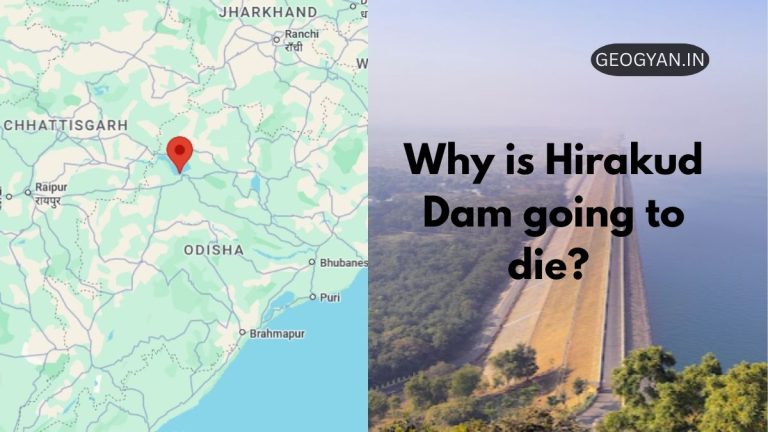Introduction
India is facing a significant challenge in managing the rapid process of urbanization and the growth of its cities. With a population of 1.028 billion, 27.8% of which live in its 5,161 cities and towns, the country is the second-most-populous in the world. The process of economic reform has further fueled urbanization, and it is expected that by 2050, half of India’s population will be living in its cities and towns.
However, the pressures of rapid growth, coupled with years of neglect, have severely impacted the condition of India’s cities and towns, leading to numerous challenges such as inadequate infrastructure, poor health and education amenities, and unregulated growth, among others. These factors have contributed to the cities and towns’ inefficiency, pollution, and vulnerability to disasters.
Given the importance of cities and towns to India’s economic well-being, it is essential to transform these areas and address the pressures of new growth to ensure they are more livable, efficient, and environmentally sustainable. Effective urban planning protocols, processes, and institutions underpinned by legislation are required to manage the transformation of India’s cities and towns and effectively manage new growth. It is crucial to develop distinctive responses that address the cities and towns’ present stressed conditions and manage new growth without repeating past mistakes.
Urban planning is the design and regulation of the use of space that focuses on the physical form, economic functions, and social impacts of the urban environment and the location of different activities within it. It involves various fields such as engineering, architecture, and social and political concerns. To effectively manage, new growth and transform India’s cities and towns, it is vital to ensure timely action in developing and implementing effective urban planning strategies.

History of Urban Planning in India
The history of urban planning in India dates to ancient times, when cities were planned with great care. However, in modern times, the unplanned growth of cities and the influx of refugees have led to a serious urban situation in India. While some progress has been made in enacting planning legislation and setting up planning agencies on the state level, planning and development have not been able to keep pace with the rapid urbanization.
The first five-year plan focused on institution building and the construction of homes for government employees and the weaker sections of society, as well as the rehabilitation of refugees and the building of Chandigarh. The subsequent plans expanded housing programs for the poor, enacted town and country planning legislations, and introduced schemes for rural housing, slum clearance, and sweepers housing. However, there was often a lack of coordination between agencies and other vital inputs that create habitats.
The fourth plan stressed the need for decongestion or dispersal of population by creating smaller towns, while the fifth plan promoted smaller towns in new urban centres. The sixth plan focused on integrated provision of services along with shelter, particularly for the poor.
In the Seventh Plan, the poor in urban areas were recognized as a vulnerable group and the government launched the Urban Basic Services for the Poor (UBSP) scheme to their needs. However, since then the allocation of resources for the building environment has largely been determined by the building materials industry, particularly cement and steel. This has resulted in the neglect of the needs of the urban poor and a widening gap between the demand and supply of basic services such as drinking water, sanitation, education, and health care.
The Eighth Plan marked a turning point in the government’s approach to the urban sector as it recognized the vital role it plays in the national economy. Although urban areas grew at an average rate of 3.8% per year, rural areas experienced a sharp decline to around 1.6%, highlighting the need to allow urban areas to absorb more labour force growth.
The plan identified several key issues in the emerging urban scenario, including a widening gap between demand and supply of basic services that disproportionately affects the poor. This led to the spread of slums and squatter settlements and the decline of the urban environment due to the unabated growth of the urban population and the accumulated housing shortage.
In recent years, the Indian government has launched several initiatives aimed at improving urban planning and development. These include the Smart Cities Mission, which aims to create 100 smart cities across the country by 2022, and the Atal Mission for Rejuvenation and Urban Transformation (AMRUT), which focuses on improving basic urban infrastructure such as water supply, sanitation, and transport.
Despite these efforts, many challenges remain, and urban planning and development will continue to be a critical issue for India in the coming years. However, with concerted efforts and a focus on sustainable, equitable development, there is reason to hope that India’s cities will become more livable, prosperous, and resilient in the coming years.

Key Features of Urban Planning in India
Urban planning in India encompasses a wide range of activities and initiatives aimed at promoting sustainable development and improving the quality of life for residents in urban areas. Key features of urban planning in India include town planning, which involves regulating land use for residential and commercial purposes, as well as the construction of buildings and infrastructure such as roads, bridges, and water supply systems.
In addition, urban planning in India also focuses on economic and social development, with a particular emphasis on promoting the interests of weaker sections of society and providing infrastructure for the handicapped and mentally challenged. Other important aspects of urban planning in India include public health care management, sewerage and sanitation, solid waste management, and fire services.
Urban forestation and environmental protection are also key priorities, with a focus on promoting sustainable development and ecological balance. Initiatives to promote cultural, educational, and aesthetic aspects of the environment, as well as increased provision of basic urban facilities like public urinals, subways, footpaths, parks, gardens, and playgrounds, are also important components of urban planning in India.
Finally, urban planning in India involves proper regulation of slaughterhouses and tanneries, as well as prevention of cruelty to animals. Proper maintenance of population statistics, including registration of births and deaths records, is also an important aspect of urban planning in India.

Advantages of Planning in India
- Planning facilitates management by setting clear objectives and providing a blueprint for achieving them. This helps employees to focus on the goals of the organization and provides guidance for decision-making.
- Planning reduces uncertainty by anticipating future events and preparing for potential risks. While the future cannot be predicted with complete accuracy, planning allows management to forecast uncertainties and make necessary provisions to minimize their impact.
- It promotes coordination and integration of efforts towards common organizational goals, avoiding duplication of efforts and improving efficiency.
- It creates a sense of order and discipline within the organization, which encourages employees to perform to their best abilities and boosts morale.
- Effective planning leads to economy in the allocation and utilization of resources, minimizing waste and maximizing productivity.
- Planning provides a basis for controlling and monitoring performance, enabling organizations to compare actual results with predetermined goals and standards.
- It provides a competitive edge by improving the quality and quantity of production, anticipating the future motives of competitors, and utilizing resources more effectively.
- Planning encourages innovation by stimulating creative thinking and imagination among managers, leading to the development of new methods and operations for growth and prosperity of the enterprise.
Drawbacks of Urban Planning in India
- Lack of public participation and consultation in the planning process, leading to the exclusion of community needs and priorities.
- Inadequate enforcement of planning regulations, leading to unauthorized constructions and violations of zoning rules.
- Poor implementation and maintenance of infrastructure projects, resulting in substandard services and facilities.
- Inadequate attention to the needs of vulnerable groups such as the urban poor, women, and marginalized communities.
- Tendency to focus on short-term goals and neglect long-term sustainability and resilience.
- Lack of integration between urban planning and other sectors such as transportation, environment, and public health, leading to fragmented and unsustainable development.
- Inadequate investment in planning capacity and resources, resulting in poor quality planning and decision-making.
Conclusion
The enactment of effective legislation for planning, housing, and slum clearance is crucial for the states. Given that only larger municipalities can afford qualified planning staff, the states must take on the responsibility of devising and implementing plans for smaller towns, villages, and development areas. The Central Government must lead by example, by providing support and technical guidance to the states for the organization and execution of effective planning programs. Furthermore, the Central Government must establish its own housing, slum clearance, and urban development programs that align with comprehensive urban planning schemes.
In order to meet the developmental needs of cities and towns, a better collaborative relationship and an equitable distribution of funds is necessary. The creation of additional planning schools is also needed to produce more trained planners and to undertake research on various issues of urban growth and development. Most importantly, urgent action is required at all levels of government to acknowledge the gravity of the urban problem.






























One Response